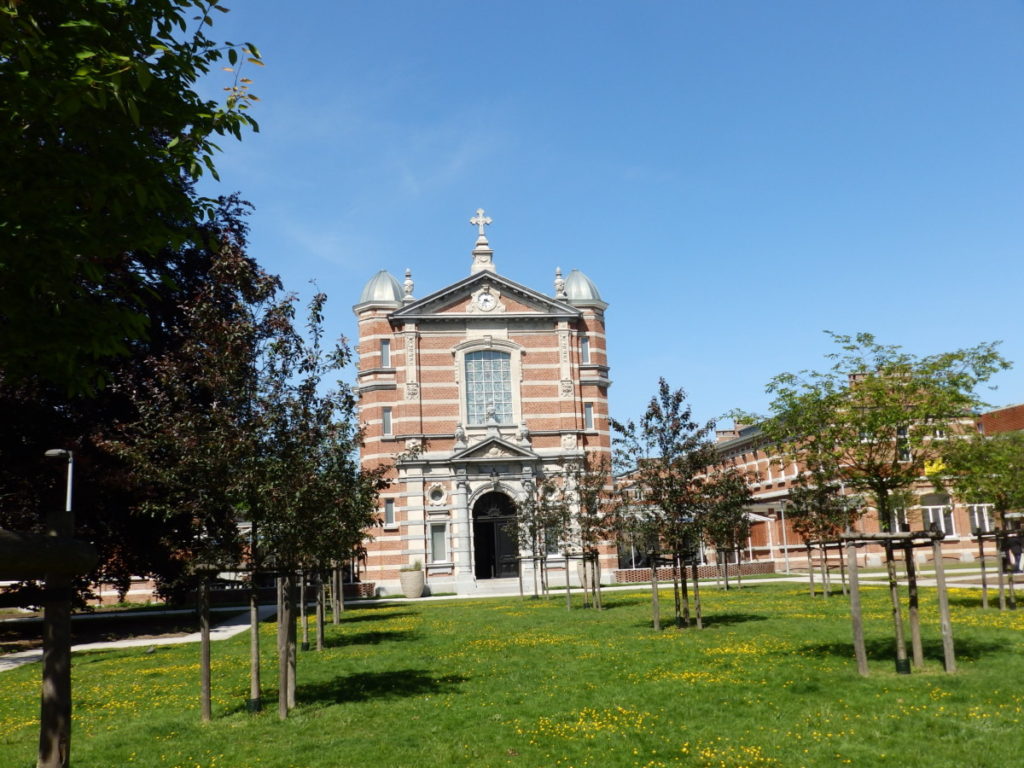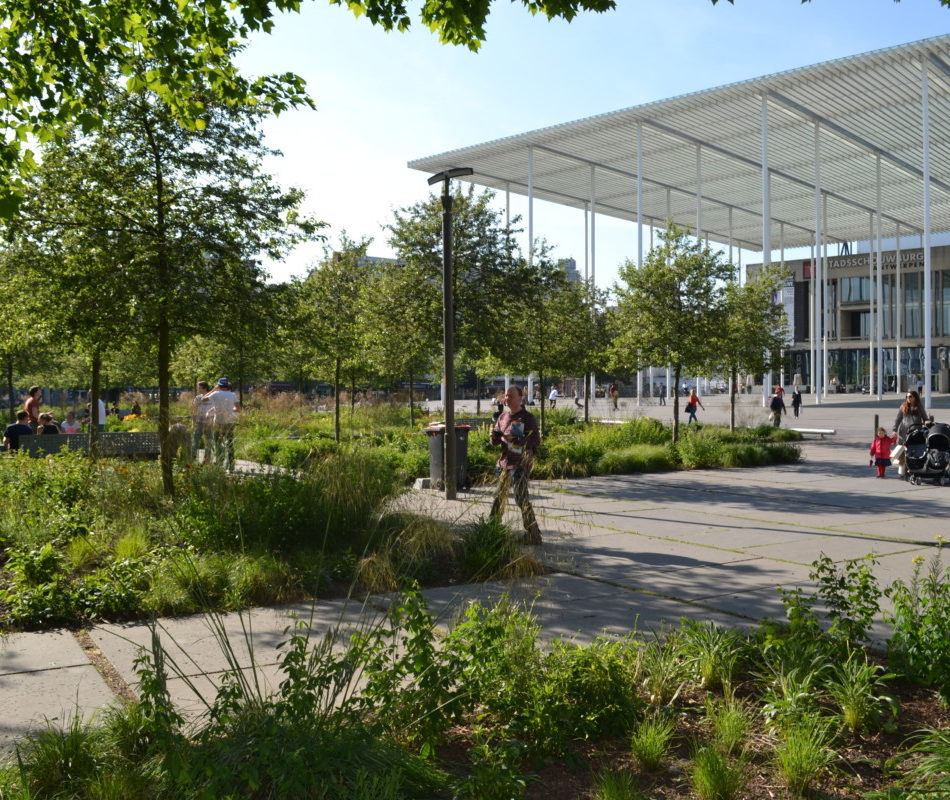Written by:
By Cleo Newcombe-Jones
If places are designed to be both people-centric and environmentally resilient it’s difficult to be too short-sighted. However, there can be a gulf between aspiration and delivery – as the performance art that opened Bristol Green Capital 2015, challenged us – how do we ‘bridge the gap’?
There is almost total synergy between places that foster human interaction, support active travel and create joy and delight, and places that are environmentally resilient. This was no more apparent than in my recent visit to Antwerp, where I met with public and private sector city planners, urban designers, architects and residents.
In Antwerp’s Groen Kwartier (Green Quarter), a garden city approach has turned a good place into a great one. This former Ministry of Defence site, has been re-developed to reach residential densities of 80-90 dph. Contemporary design blends effortlessly with the rejuvenated and restored listed military hospital. But most strikingly, 50 per cent of the site coverage is green – green roofs, garden terraces, wildflowers, trees, and lawns replace the often dominant car parking spaces and tarmac.
Cars are parked underground, but the cycle and public transport offer is now so good that many of the new residents decide they no longer need to own a car. Landscape Architect Michel Desvigne has carefully selected tree species ideal for summer shading and spring blossom; ornate metal trellises provide support for vines that form summer canopies and shelter personalised front yards and orchards have been planted for children to pick fruit together in the autumn.

In Antwerp’s Park Spoor Nord is a stunning 24 hectare new public park created from former railway land, a deal was struck with developers to provide a huge amount of public open space alongside residential development,. Central to the park is Cargo Zomebar, a café which looks out onto a public water feature which is both a play space and a mechanism for hugely effective summer cooling.

Many of Antwerp’s existing public spaces have undergone dramatic transformation, parts of Theatreplein, a large public square that hosts markets, have become an urban forest, with tree canopies and forest floors replacing 1970s brutalism. The microclimate is transformed, and problems of flash-flooding resolved. Rainwater collected on the market square canopy waters the plants, rather than filling the drains. The space has been reinvented and the results are stunning.
Antwerp Stad (City Council) distil their approach to urban development in their mantra of ‘slow urbanism’. Their idea that incremental change (often started small scale, by individuals), and initially small deviations in design approaches can have a high cumulative impact, is a powerful one – plus it works! They built their city-wide cycle network from nothing on this basis over the past 10 years. I think this mantra resonates strongly with Bristol, a city where grassroots community activism on green issues has culminated in the City being recognised as European Green Capital. I’m optimistic that by creating places that are environmentally resilient, we can do a lot to improve places for people – for the long-term.
Cleo is a Town Planner and Urban Designer, based in Bath. Cleo is one of the founders of Bath Green Homes, and co-chairs the West of England Sustainable Construction Network (WESCON). She is a visiting lecturer at Geography Department at Bath Spa University, and a member of the Bristol Green Capital Place Partnership.
All images © Cleo Newcombe-Jones
Is our view of place too short-sighted? The Bristol Debate takes place on 11 February from 6-7.30pm.
